
Fundamentals
The very notion of hair, for those of us who trace our lineage through the vibrant and complex tapestries of Black and mixed-race communities, extends far beyond mere biology. It is a living chronicle, a silent orator of ancestral wisdom, and a profound expression of identity. To speak of the Hair Growth Cycles, then, is not simply to delineate a biological process; it is to speak of the rhythm of life itself, a cycle deeply interwoven with the historical currents and cultural practices that have shaped textured hair for millennia. This rhythmic progression, often understood as the Hair Growth Cycles, refers to the distinct phases every single strand of hair on our heads undergoes from its initial emergence to its eventual release.
At its most fundamental, the Hair Growth Cycles comprise three primary stages ❉ Anagen, the period of active growth; Catagen, a transitional phase; and Telogen, the resting stage before a new cycle begins. This foundational understanding provides a universal framework, yet its interpretation and application within the context of textured hair are uniquely colored by centuries of inherited knowledge and adaptive practices. For our ancestors, particularly those in West African societies, the hair was not just a biological filament; it was a revered symbol, communicating lineage, social standing, age, and even spiritual connection. The deliberate care and intricate styling of hair, often involving hours of communal effort, were deeply informed by an intuitive grasp of these cycles, even if not articulated in modern scientific terms.
The Hair Growth Cycles represent the inherent rhythm of life for every strand, a process that transcends mere biology to become a profound cultural and historical narrative for textured hair.
Understanding the Hair Growth Cycles for textured hair begins with acknowledging its unique structural properties. Coiled and kinky hair, with its characteristic twists and turns, possesses a distinct follicular architecture that influences how each phase unfolds. This natural curvature, while undeniably beautiful, can also make textured hair more susceptible to dryness and breakage if not cared for with mindful attention to its inherent needs. Traditional practices, long before the advent of contemporary science, instinctively recognized this fragility, employing rich emollients and protective styles to honor the hair’s natural inclination.
The basic meaning of the Hair Growth Cycles, therefore, is the cyclical renewal of hair. This continuous process ensures that our crowns remain vibrant and resilient, a testament to the body’s innate capacity for regeneration. For those of us with textured hair, this natural rhythm is not just a biological fact; it is a profound connection to the enduring legacy of our forebears, who understood the significance of every strand as a living part of their heritage.

Intermediate
Moving beyond the elementary delineation, the Hair Growth Cycles reveal a deeper, more nuanced interaction between biological predisposition and environmental influence, particularly for textured hair. The explanation of these cycles — Anagen, Catagen, and Telogen — becomes a lens through which we can better appreciate the historical resilience and adaptive genius of Black and mixed-race hair care traditions. The duration of each phase, for instance, varies among individuals and can be affected by a multitude of factors, from genetics to diet, stress, and even the very styling practices employed.
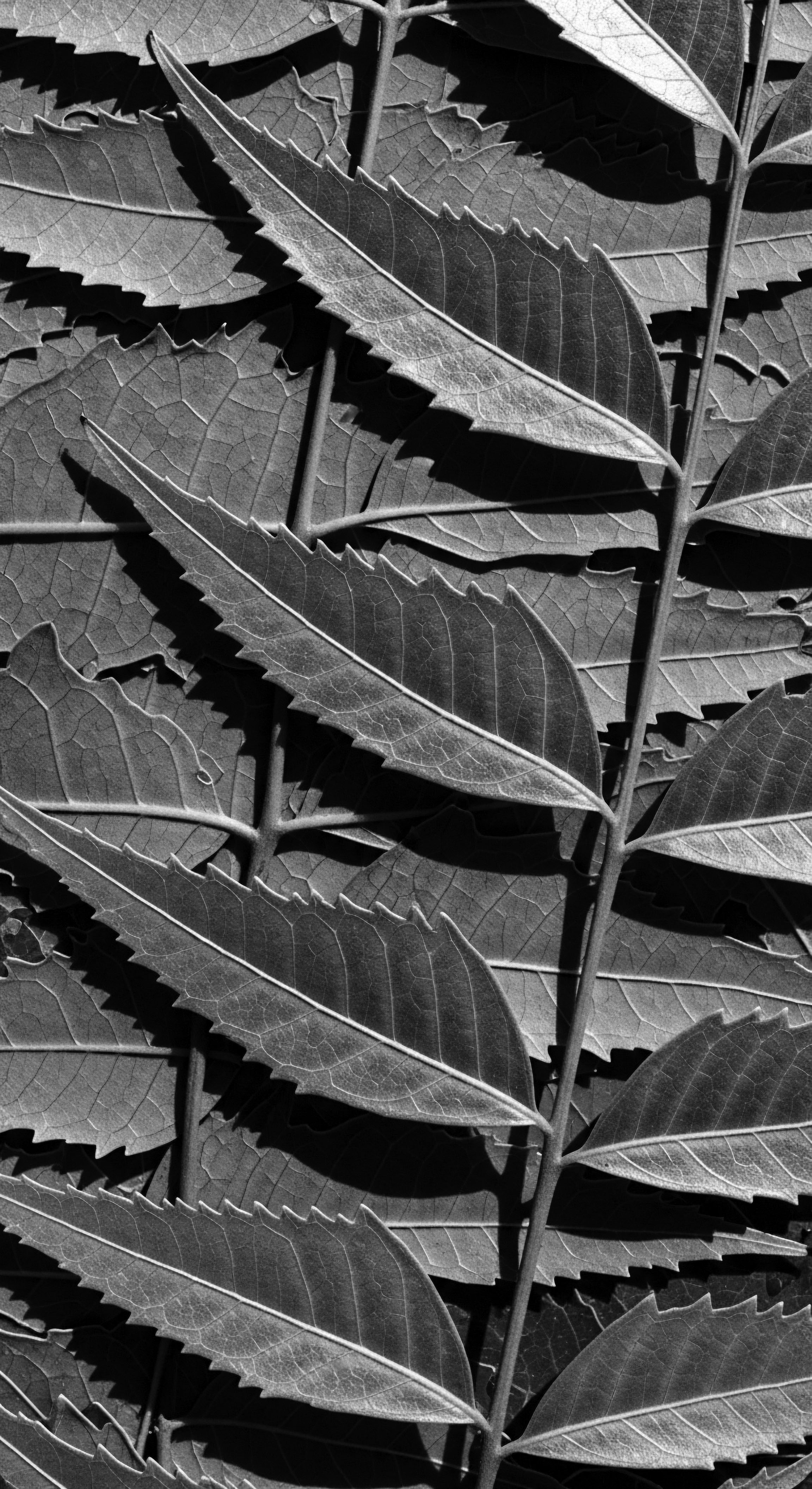
Anagen ❉ The Flourishing Phase
The Anagen Phase, the period of active cellular proliferation, dictates the potential length a strand can achieve. For textured hair, this growth period, which can span from two to seven years, is often marked by slower apparent length retention due to the coiling pattern. The hair grows in spirals, and while the actual rate of growth from the scalp might be comparable to other hair types, the visible length is diminished by its curl. Ancestral communities understood the aspiration for length as a marker of health and vitality.
In pre-colonial Africa, hair length and intricate styles often conveyed messages about social status, religion, and family heritage. The Mbalantu women of Namibia, for example, are celebrated for their exceptionally long, braided hair, achieved through meticulous traditional practices that support length retention over many years, starting with special treatments from around the age of twelve. Their rituals involve coating the hair with a thick paste of ground omutyuula tree bark mixed with fat, a testament to deep, inherited knowledge of what promotes healthy, sustained growth.
The understanding of this growth phase, though not articulated in contemporary biological terms, guided the application of traditional oils, butters, and herbal concoctions, many of which are now being validated by modern ethnobotanical studies for their fortifying and nourishing properties. These ancient remedies, such as shea butter, coconut oil, and aloe vera, prioritize moisture and scalp health, laying a foundation for sustained anagen growth.
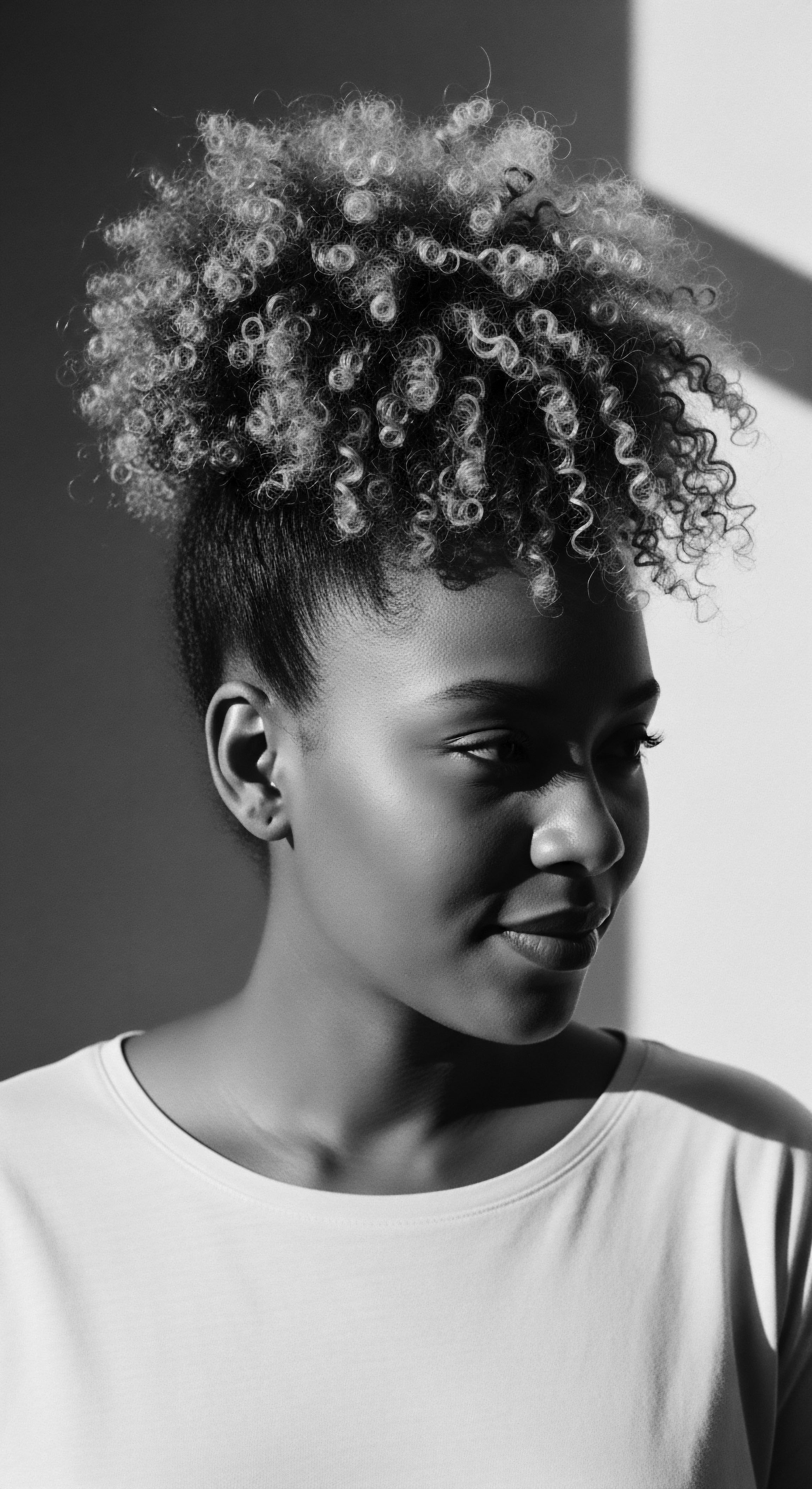
Catagen ❉ The Transitional Pause
Following the expansive Anagen stage, the Catagen Phase offers a brief, almost contemplative pause. Lasting merely a few weeks, this transitional period signals the cessation of active growth. The hair follicle shrinks, and the hair strand detaches from its blood supply, preparing for its eventual release. While often overlooked in a casual overview, this phase holds a subtle but significant connotation for those attuned to the rhythms of hair.
It is a time of letting go, a natural shedding that precedes new beginnings. In many ancestral practices, even the shedding of hair held symbolic meaning, sometimes associated with mourning or transformation, with hair disposed of ceremoniously.
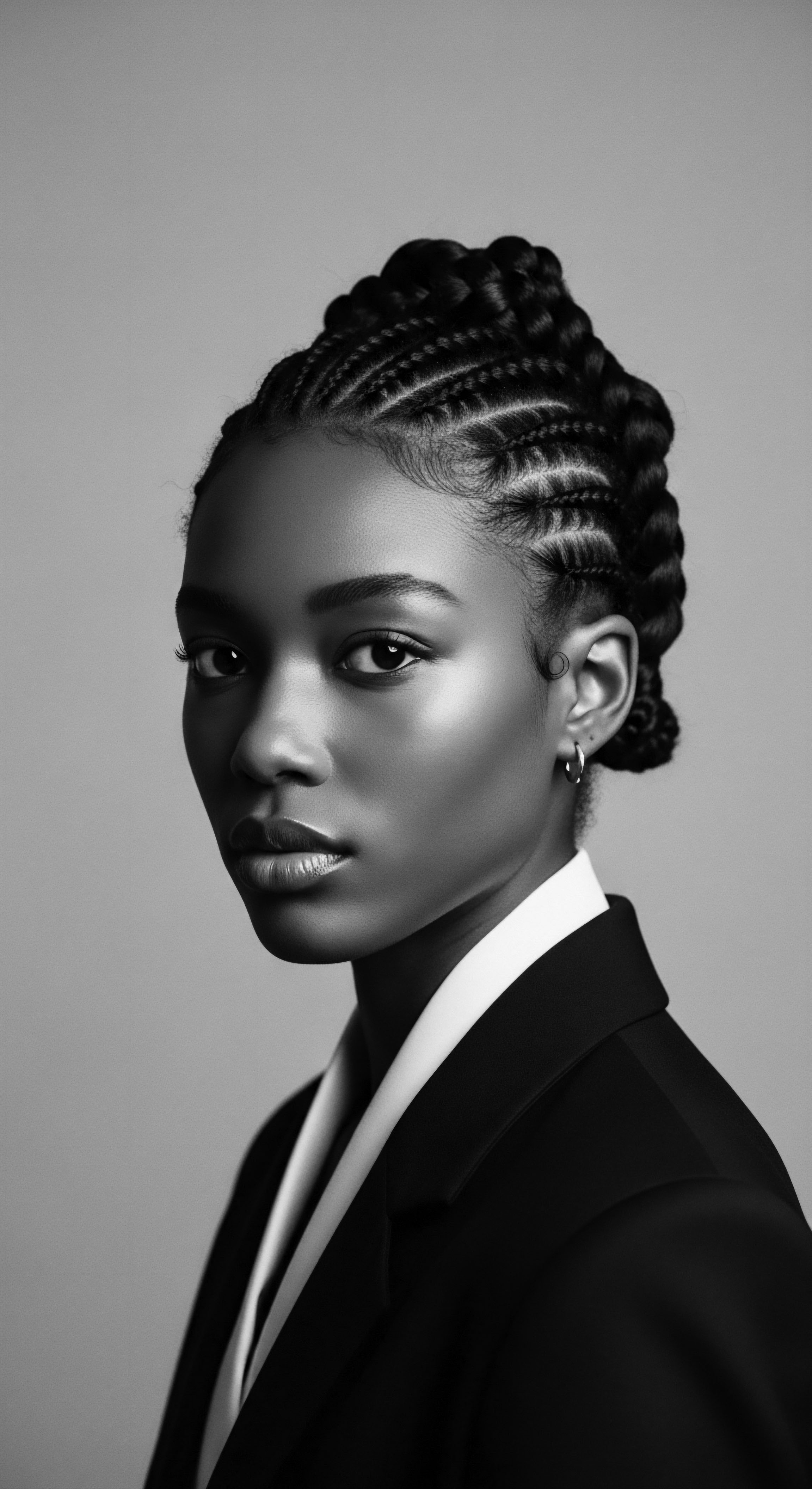
Telogen ❉ The Resting and Renewal Stage
The Telogen Phase, the resting period, typically spans about three months. During this time, the hair strand remains in the follicle but is no longer growing. Beneath it, a new hair begins to form, pushing the old one out.
This is the period of natural shedding, a vital part of the Hair Growth Cycles that makes way for fresh emergence. For individuals with textured hair, this shedding can sometimes appear more pronounced due to the way shed hairs can become intertwined with growing strands, only becoming fully visible during detangling.
The Hair Growth Cycles, from active growth to resting and renewal, are a continuous testament to the body’s regenerative power, mirroring the enduring spirit and adaptive practices of textured hair heritage.
The communal hair care rituals, prevalent in many African cultures, often occurred on Sundays, a day of rest for enslaved people, becoming a tradition for African Americans. This communal practice, which involved detangling and styling, would have inherently managed shed hairs from the telogen phase, keeping the scalp clear for new growth. This practice, rooted in necessity and community, underscores the deep connection between hair health, social bonding, and the implicit understanding of the Hair Growth Cycles.
The historical context of hair care for Black and mixed-race individuals is undeniably shaped by the imposition of Eurocentric beauty standards. During slavery, enslaved Africans were often forced to shave their heads, an act intended to dehumanize and strip them of their identity. This forced erasure of ancestral practices and the subsequent lack of access to traditional tools and ingredients led to significant challenges in hair care. Yet, even amidst such profound adversity, resilience shone through.
Enslaved women found ways to care for their hair using homemade products and traditional techniques, preserving their heritage through styles like braids and twists, some even braiding rice seeds into their hair as a means of survival. This demonstrates a profound, inherited understanding of hair’s needs, even when the scientific language was absent.
| Aspect of Cycle Anagen (Growth) |
| Traditional Wisdom (Heritage Context) Emphasis on length retention through protective styles (braids, twists) and nourishing ingredients (shea butter, plant oils) to promote strong, healthy hair. Hair as a symbol of vitality and status. |
| Modern Scientific Understanding Active mitotic activity in the hair matrix, leading to hair shaft elongation. Duration (2-7 years) dictates maximum hair length. Influenced by genetics, nutrition, and hormonal factors. |
| Aspect of Cycle Catagen (Transition) |
| Traditional Wisdom (Heritage Context) A period of subtle change; recognition of natural shedding as part of hair's life, though not explicitly defined as a phase. Focus on gentle handling. |
| Modern Scientific Understanding Follicle regression, cessation of melanin production, and detachment of the hair bulb from the dermal papilla. Lasts approximately 2-3 weeks. |
| Aspect of Cycle Telogen (Resting/Shedding) |
| Traditional Wisdom (Heritage Context) Shedding acknowledged as a natural process, often managed through communal grooming rituals. New growth expected to follow. |
| Modern Scientific Understanding Hair rests in the follicle; a new hair begins to grow beneath it, pushing the old one out. Lasts about 3 months. Average daily shedding of 50-100 hairs. |
| Aspect of Cycle This comparative lens reveals a harmonious interplay, where ancestral knowledge, passed down through generations, often intuitively aligns with contemporary scientific explanations, reinforcing the deep-seated wisdom embedded within textured hair care traditions. |
The Hair Growth Cycles, therefore, are not merely a biological fact to be observed; they are a continuous story of growth, renewal, and adaptation, profoundly shaped by the historical experiences and cultural interpretations of textured hair. The wisdom of our ancestors, reflected in their practices, continues to inform our understanding of hair’s inherent rhythm and its enduring connection to identity.
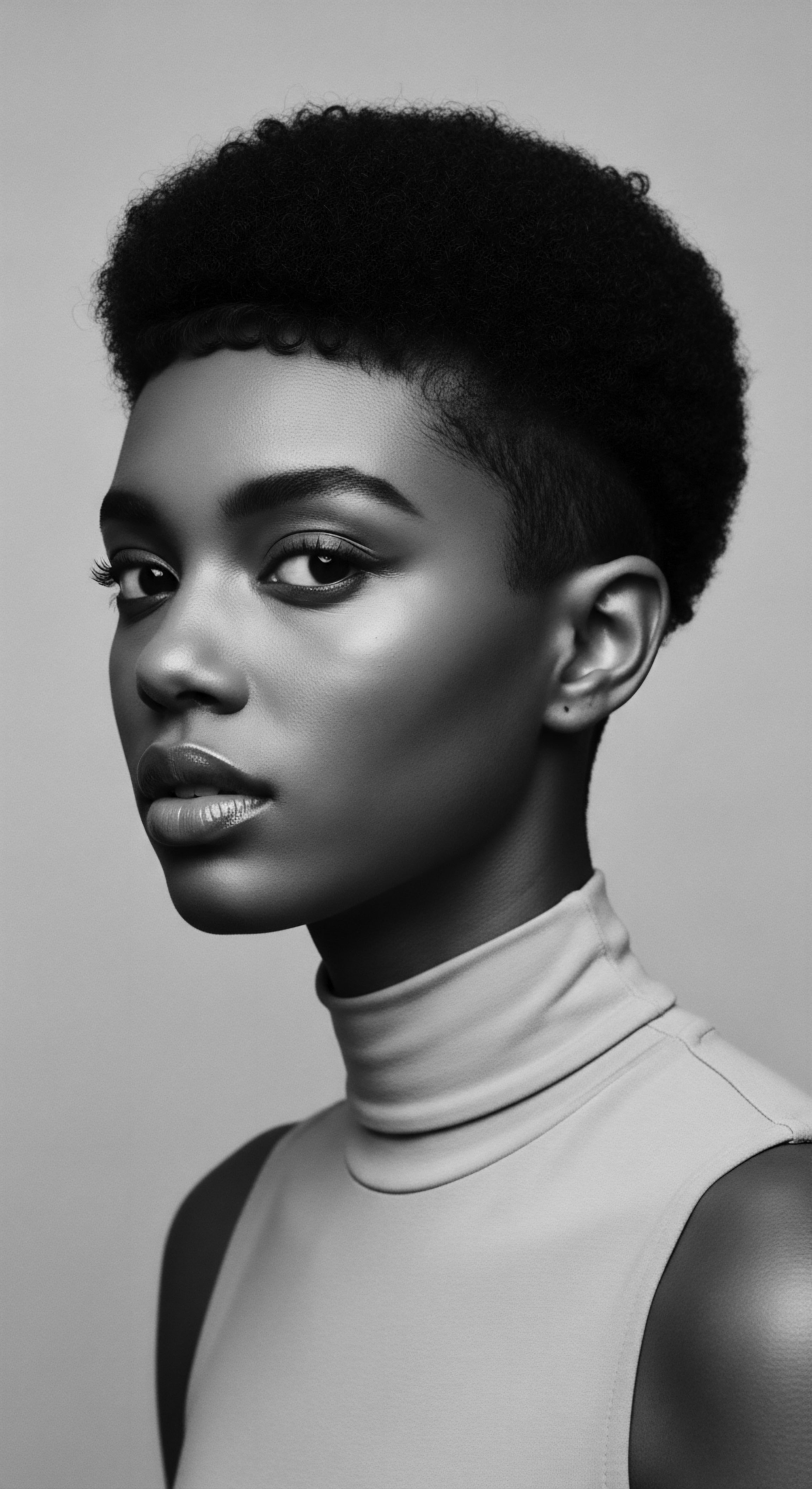
Academic
The Hair Growth Cycles, in an academic context, represents a meticulously orchestrated biological phenomenon, a dynamic process underpinning the continuous regeneration of the pilosebaceous unit. This complex definition involves a cyclical interplay of cellular proliferation, differentiation, and programmed cell death within the hair follicle, a miniature organ capable of remarkable self-renewal. The precise delineation of these phases—Anagen, Catagen, and Telogen, with some scholars positing a fourth, Exogen, for active shedding—is fundamental to comprehending hair biology and, critically, to addressing the unique dermatological and cultural considerations pertinent to textured hair.
The academic meaning of the Hair Growth Cycles extends beyond mere description; it involves a rigorous examination of the molecular signals, cellular interactions, and genetic predispositions that govern each phase. This includes the intricate dance of growth factors, hormones, and signaling pathways that regulate follicular stem cell activity and determine hair fiber production. For textured hair, this inherent biological framework is inextricably linked to centuries of socio-historical pressures and cultural practices, demanding an interdisciplinary lens that marries biological science with anthropological and historical inquiry.

Anagen ❉ A Deep Dive into Proliferative Dynamics
The Anagen Phase, the cornerstone of hair production, is characterized by intense metabolic activity within the hair matrix cells, which rapidly divide and differentiate to form the hair shaft. This period, varying significantly in duration (from months to years), dictates the ultimate length a hair can attain. For individuals of African descent, the helical and elliptical cross-sectional morphology of the hair follicle produces hair with a distinct coiling pattern, which can influence perceived length and contribute to challenges such as breakage and knotting, even during periods of robust anagen growth. The hair’s natural twists and turns, while visually striking, create points of structural vulnerability, demanding specific care regimens.
From an academic perspective, understanding the molecular mechanisms that sustain a prolonged anagen phase in textured hair is a frontier of research. Traditional African hair care practices, passed down through generations, often utilized ingredients now recognized for their potential to support scalp health and reduce breakage, thereby indirectly optimizing the anagen duration. For instance, the use of Chebe Powder by Basara Arab women of Chad, a mixture of herbs and seeds, has been documented for its role in length retention by coating and protecting the hair shaft, preventing breakage, and locking in moisture. This ancestral practice, though not framed in terms of “anagen extension,” effectively supports the hair’s capacity for sustained growth by minimizing external stressors that might prematurely truncate the anagen phase.
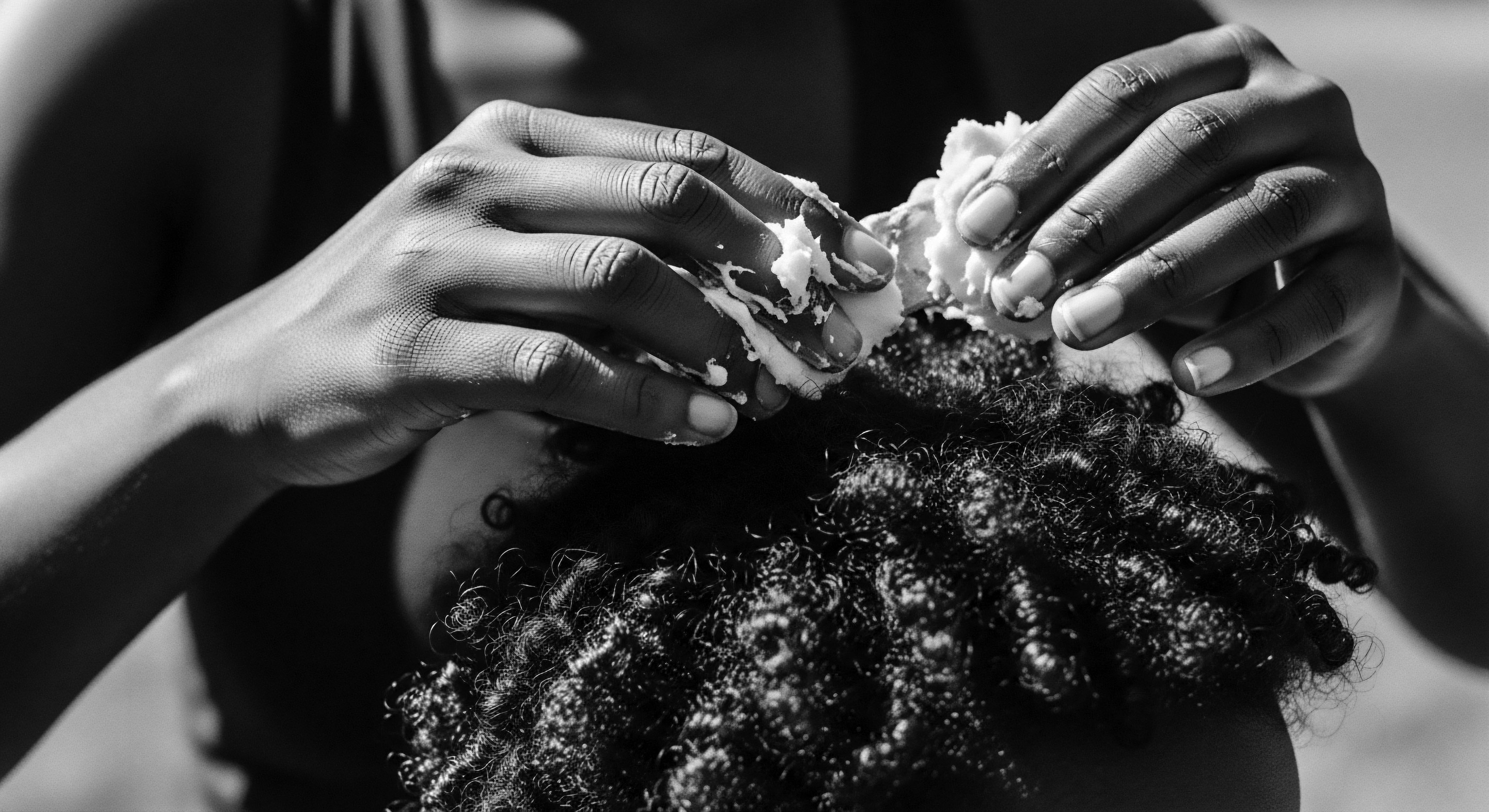
Catagen ❉ The Intricacies of Involution
The Catagen Phase, a brief but critical period of controlled regression, involves the cessation of keratinocyte proliferation and the programmed involution of the lower two-thirds of the hair follicle. This transitional stage, typically lasting two to three weeks, is marked by apoptosis of follicular cells and the upward migration of the dermal papilla. For textured hair, the delicate nature of the hair shaft means that external forces, particularly those associated with tight styling or chemical treatments, can exacerbate hair fragility during this vulnerable period.
A nuanced understanding of catagen is vital in dermatological contexts, particularly in diagnosing conditions like traction alopecia, a common form of hair loss disproportionately affecting Black women due to prolonged or repeated tension on the hair root from certain hairstyles. A 2016 study from Johns Hopkins University, published in the Journal of the American Academy of Dermatology, lends evidence to the belief that certain hairstyles—particularly those popular among African-American women—contribute to hair loss, with an estimated one-third of African-American women suffering from traction alopecia. This statistic underscores the profound interplay between cultural practices, hair biology, and health outcomes.
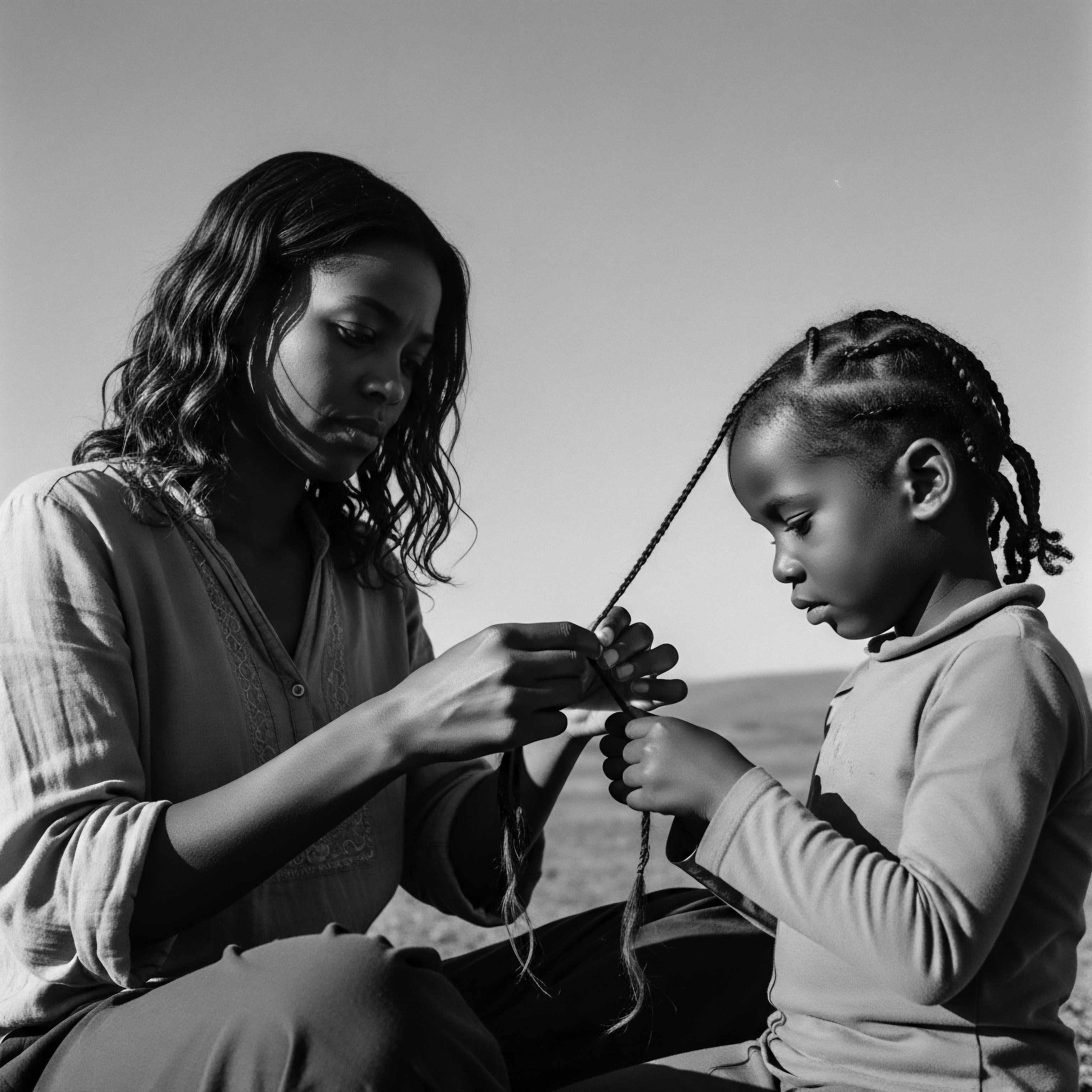
Telogen ❉ The Resting Phase and Exogen Shedding
The Telogen Phase represents a quiescent period where the hair follicle rests, typically for approximately three months. During this time, the fully keratinized club hair remains anchored in the follicle, while beneath it, a new anagen hair begins to form. The subsequent Exogen Phase, often considered a distinct fourth stage, involves the active shedding of the club hair, propelled by the emerging new anagen hair. Disruptions in this delicate balance can lead to various forms of alopecia, including telogen effluvium, where an excessive number of hairs prematurely enter the telogen phase.
The meaning of this shedding process within the context of textured hair care has been historically misinterpreted or pathologized. Due to the coiling nature of textured hair, shed hairs can remain intertwined within the existing strands for extended periods, only becoming apparent during detangling or washing. This can lead to a perception of excessive shedding, when in reality, it may simply be the accumulation of naturally shed hairs. This academic clarification is crucial for countering negative self-perception and promoting healthy hair care practices.
The academic exploration of Hair Growth Cycles for textured hair unveils a complex interplay of biology, historical oppression, and enduring cultural practices, demanding a culturally competent and scientifically rigorous approach to hair health.
The historical weaponization of hair texture during slavery, where kinkier hair was relegated to arduous field labor while straighter textures were granted domestic privileges, fostered a deeply damaging hierarchy within Black communities. This historical context, alongside the pervasive influence of Eurocentric beauty standards, has led to widespread use of chemical straighteners and high-tension styles, which, while offering perceived social advantages, have also been linked to various dermatological conditions. For instance, chemical relaxers have been associated with an increased risk of uterine fibroids and certain cancers due to harmful chemicals like parabens and phthalates. This complex interplay of historical trauma, societal pressure, and biological impact highlights the need for a holistic, academically informed approach to textured hair health.
The academic interpretation of the Hair Growth Cycles for textured hair, therefore, must be multi-layered, considering not only the inherent biological mechanisms but also the profound impact of historical, cultural, and socio-economic factors. It is an area ripe for continued research, particularly in understanding how traditional practices and indigenous ingredients can be integrated with modern scientific insights to support optimal hair health and resilience, while simultaneously decolonizing beauty standards and celebrating the inherent splendor of textured hair.
- Anagen Phase ❉ The period of active hair synthesis, where matrix cells at the base of the follicle rapidly divide, forming the hair shaft. This phase determines hair length.
- Catagen Phase ❉ A brief, transitional stage where the hair follicle regresses, detaching the hair from its blood supply.
- Telogen Phase ❉ The resting period, during which the hair is inactive and eventually sheds, making way for a new hair cycle.
The implications of this cyclical understanding are vast, extending into clinical dermatology, product development, and the very psychology of identity. By rigorously examining the Hair Growth Cycles through a heritage-informed academic lens, we not only deepen our scientific comprehension but also honor the profound legacy of care and resilience embedded within textured hair traditions.
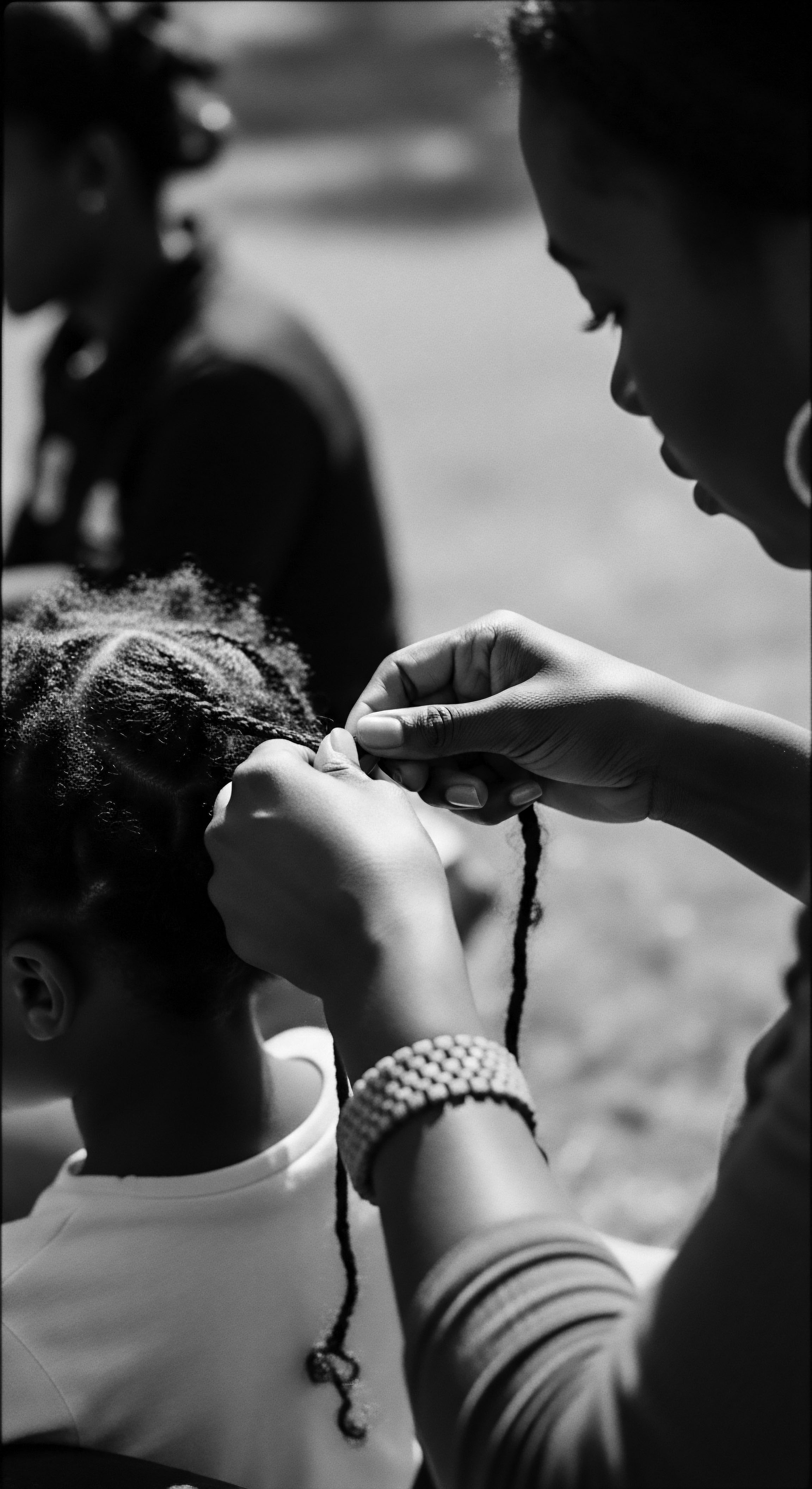
Reflection on the Heritage of Hair Growth Cycles
As we close this contemplation of the Hair Growth Cycles, a deeper resonance settles within the Soul of a Strand. It becomes clear that these biological rhythms are not isolated phenomena; they are echoes from the source, living traditions, and shapers of identity, especially for those of us whose hair carries the ancestral memories of textured coils and kinks. The journey of each strand, from its nascent emergence to its graceful release, mirrors the enduring spirit of Black and mixed-race communities—a continuous narrative of growth, resilience, and renewal.
The wisdom of our forebears, often dismissed as mere folk remedies, finds profound validation in our contemporary understanding of hair biology. Their practices, born of necessity and an intimate connection to the earth’s bounty, instinctively supported the very cycles we now delineate with scientific precision. Consider the communal hair care rituals, often undertaken on Sundays, where the tending of hair became a sacred act of bonding and cultural preservation amidst the brutal realities of enslavement. These moments, steeped in shared experience, were not just about aesthetics; they were about maintaining scalp health, detangling shed hairs, and fostering an environment where new growth could flourish, a testament to an intuitive grasp of the Hair Growth Cycles.
The challenges faced by textured hair throughout history—from forced shaving and the imposition of Eurocentric beauty standards to the damaging effects of chemical straighteners—have profoundly shaped its journey. Yet, through it all, the Hair Growth Cycles continued, an unwavering testament to life’s persistence. This cyclical nature of hair, therefore, is not just a biological fact; it is a symbol of profound defiance and an enduring connection to heritage. It speaks to the deep, unbroken lineage of care that has always existed, adapting and transforming across continents and generations.
To truly honor the Hair Growth Cycles for textured hair is to honor this heritage. It is to recognize that the strength and beauty of our strands are not just about genetics, but about the legacy of those who tended to them with love, knowledge, and an unwavering belief in their inherent worth. Each new hair that sprouts is a whisper from the past, a vibrant declaration of identity, and a promise for the future. In this living library of Roothea, the Hair Growth Cycles are not merely a definition; they are a celebration of life, lineage, and the unbound helix of textured hair.
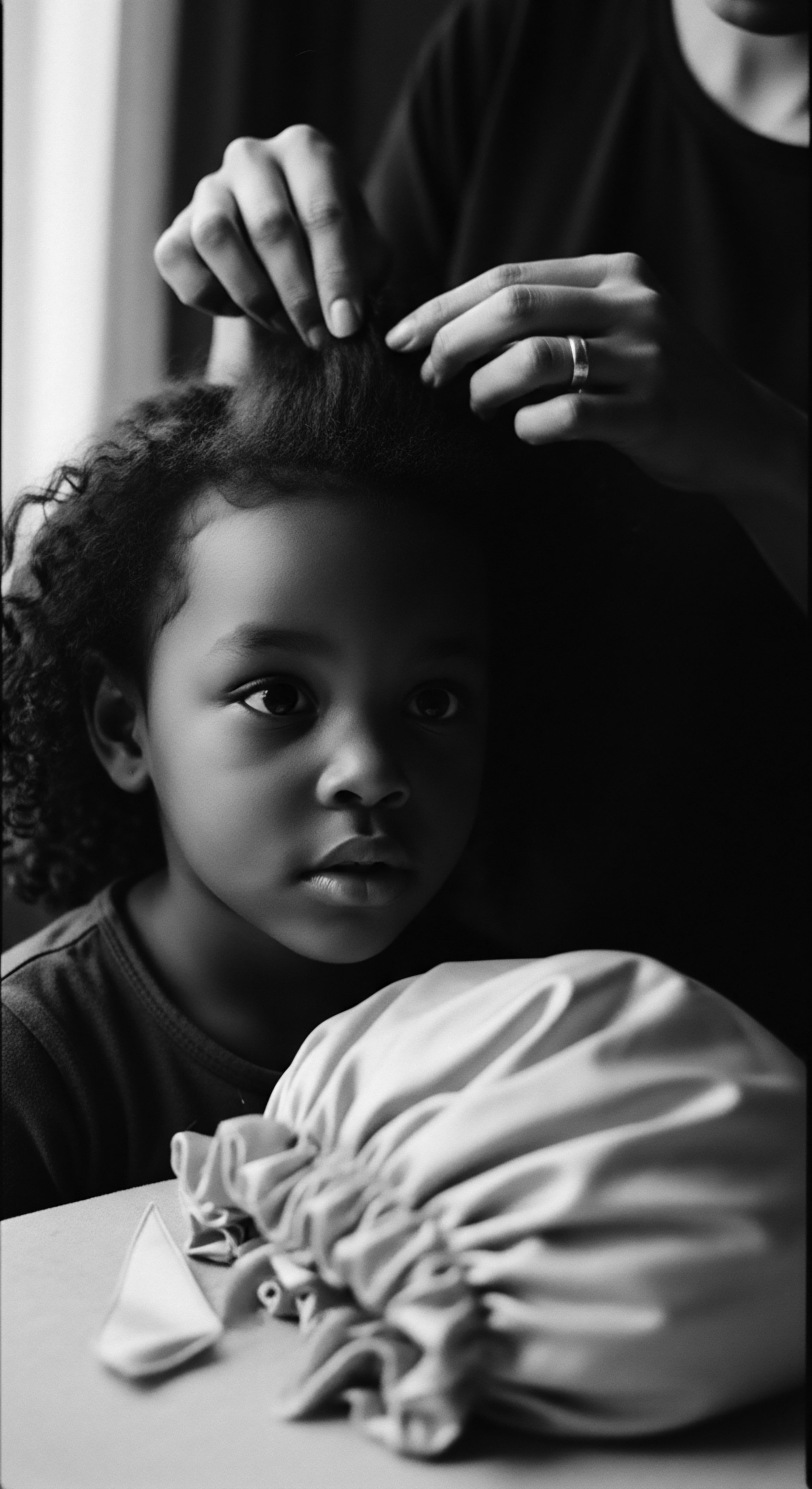
References
- Byrd, A. D. & Tharps, L. D. (2014). Hair Story ❉ Untangling the Roots of Black Hair in America. St. Martin’s Griffin.
- Aguh, C. & Maibach, H. (2016). Hair Loss in Women of Color ❉ Medical and Surgical Approaches. Springer.
- Collins, L. (2015). The Cultural Politics of Black Hair. Palgrave Macmillan.
- Gathers, R. C. (2013). Good Hair ❉ The Hair Care and Hairstyling Practices of African American Women. Hampton University Press.
- Hunter, T. (2016). Buying Freedom ❉ The Hair Industry and the Making of a Black Millionaire. Columbia University Press.
- Mercer, K. (1994). Welcome to the Jungle ❉ New Positions in Cultural and Ethnic Studies. Routledge.
- Rooks, N. M. (1996). Hair Raising ❉ Beauty, Culture, and African American Women. Rutgers University Press.
- Simon, D. (2001). Hair ❉ Public, Political, Extremely Personal. Yale University Press.
- Walker, A. (2018). The Legacy of Madam C.J. Walker. Indiana Historical Society Press.
- Aguh, C. & Okoye, G. A. (2019). Fundamentals of Ethnic Hair ❉ The Dermatologist’s Guide. Springer.
- Adhirajan, N. Ravi Kumar, T. Shanmugasundaram, N. & Babu, M. (2003). In Vivo and in vitro evaluation of hair growth potential of Hibiscus rosa-sinensis Linn. Journal of Ethnopharmacology, 88(2-3), 235-239.
- Okoye, G. A. & Aguh, C. (2020). Hair and Scalp Diseases ❉ A Medical and Surgical Approach. Springer.
- Banks, I. (2000). Hair Matters ❉ Beauty, Power, and Black Women’s Consciousness. New York University Press.
- Boyce, R. (2016). African American Hair ❉ A Comprehensive Guide to its History, Culture, and Care. Createspace Independent Publishing Platform.
- Byrd, A. D. & Tharps, L. D. (2014). Hair Story ❉ Untangling the Roots of Black Hair in America. St. Martin’s Griffin.
